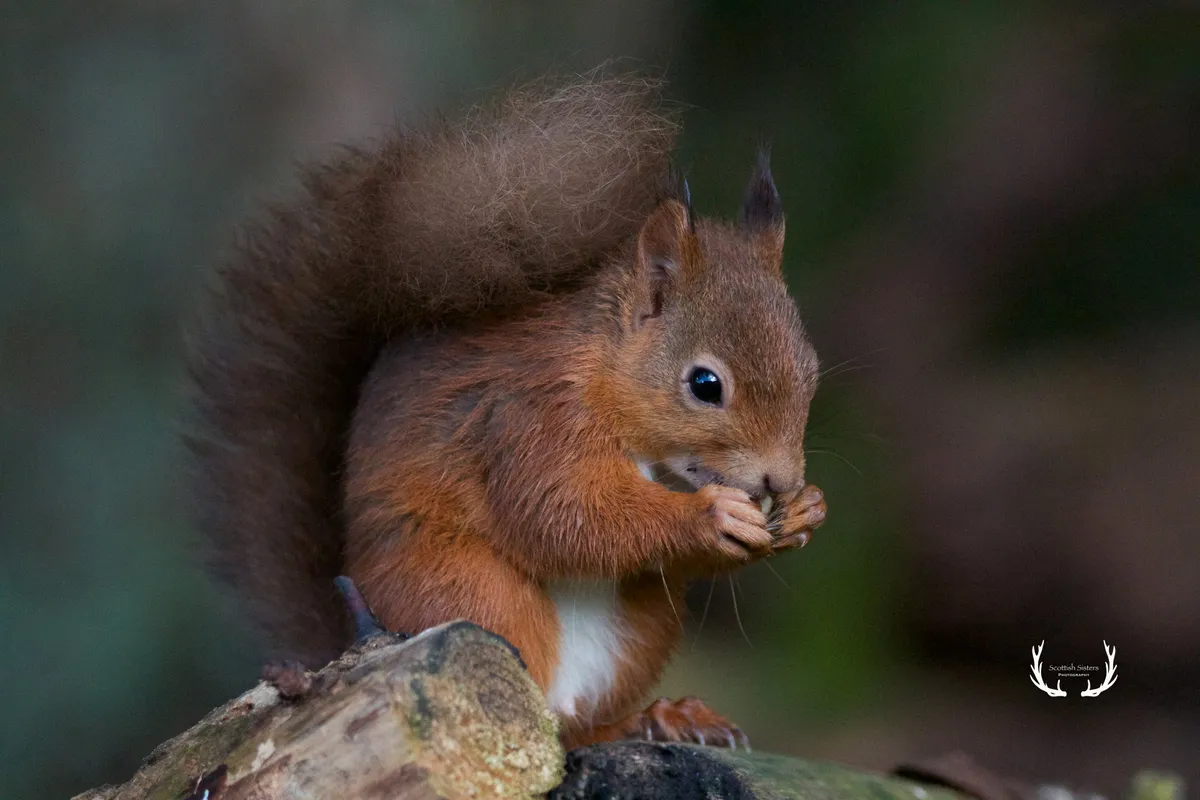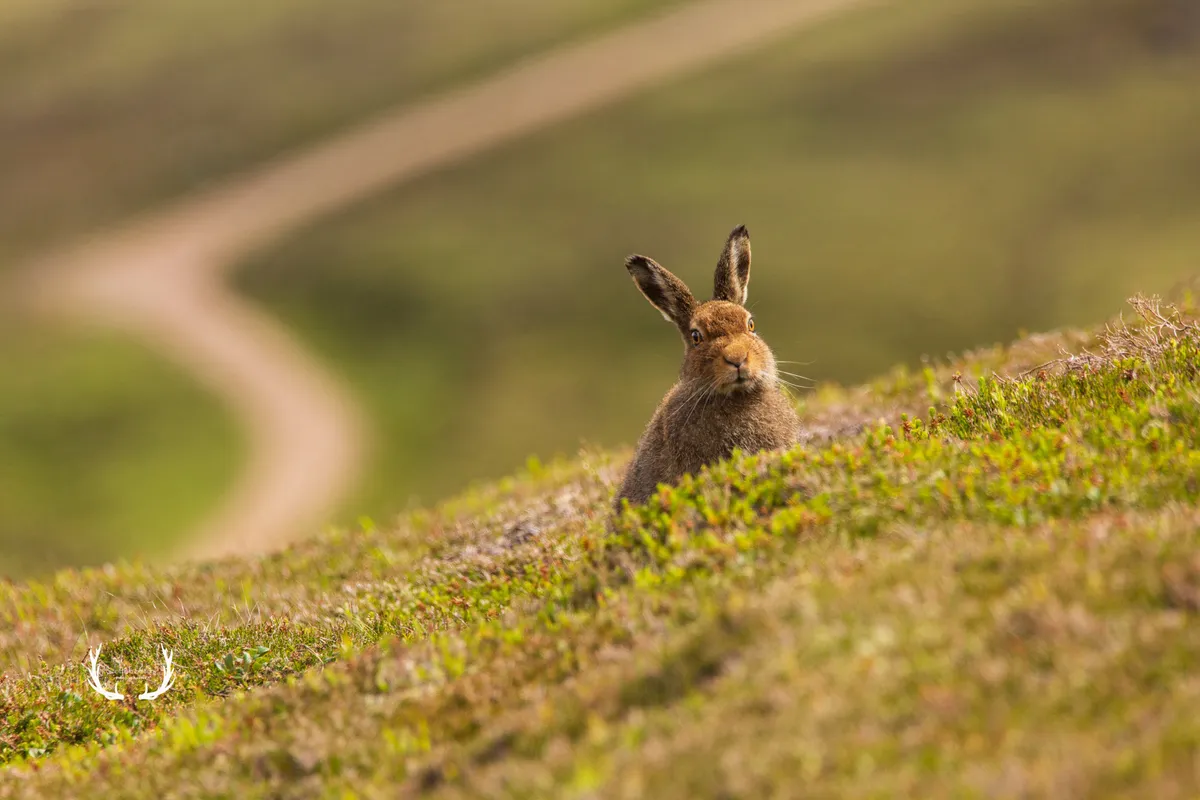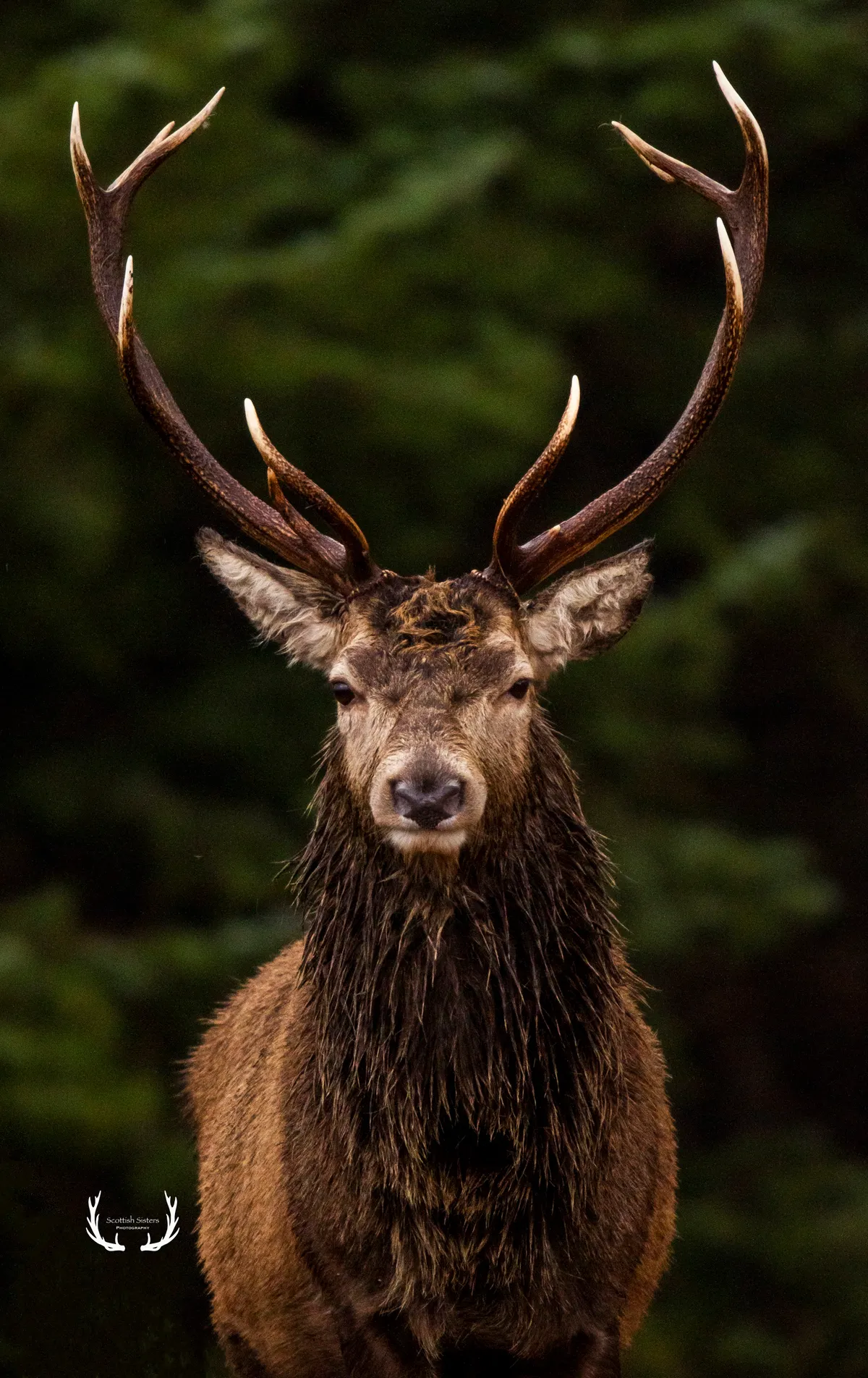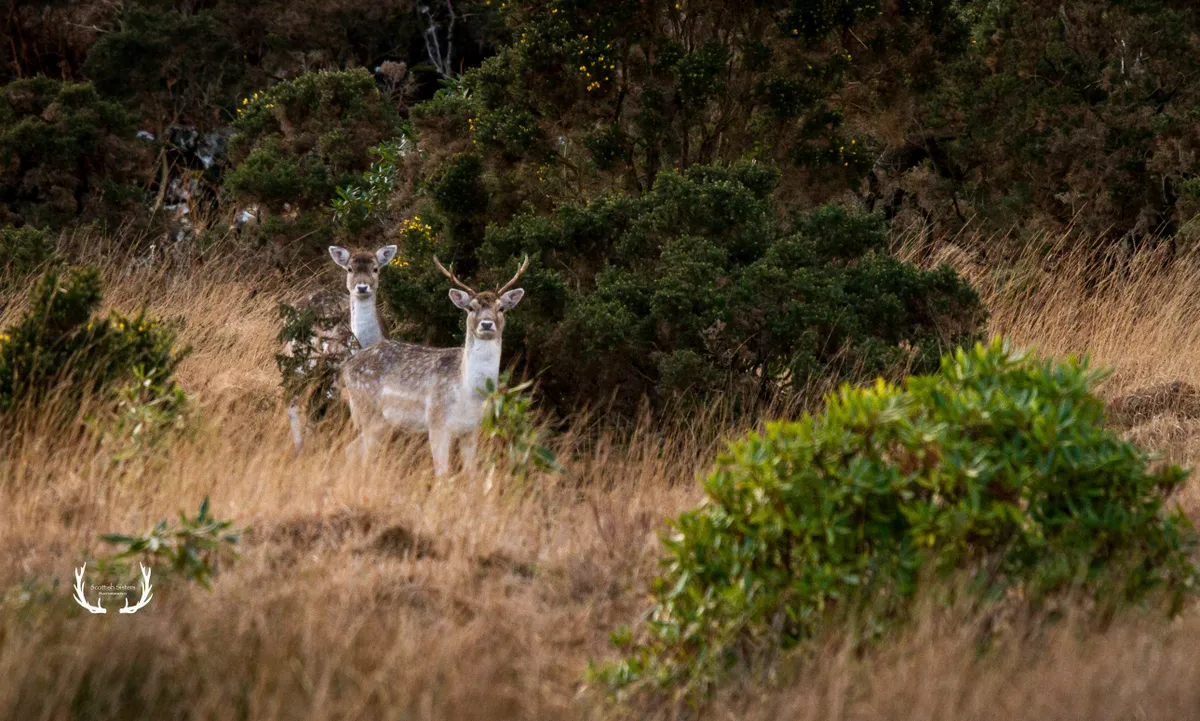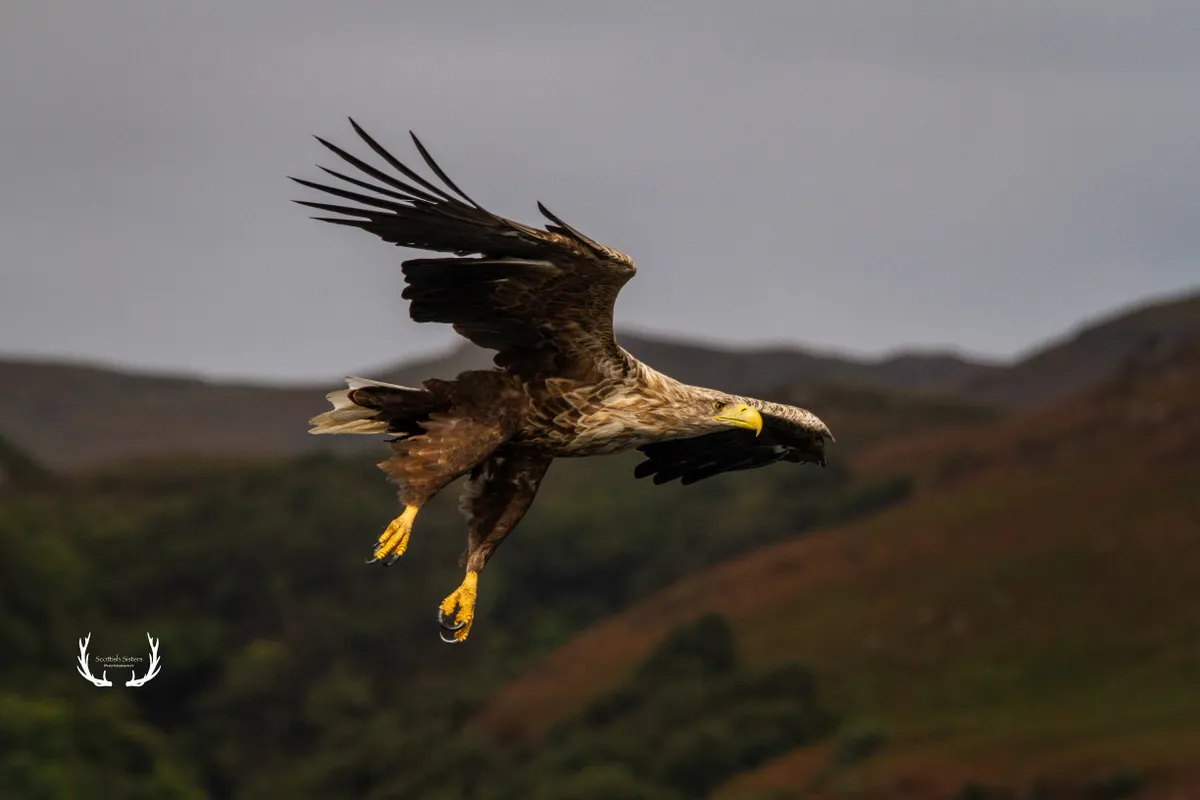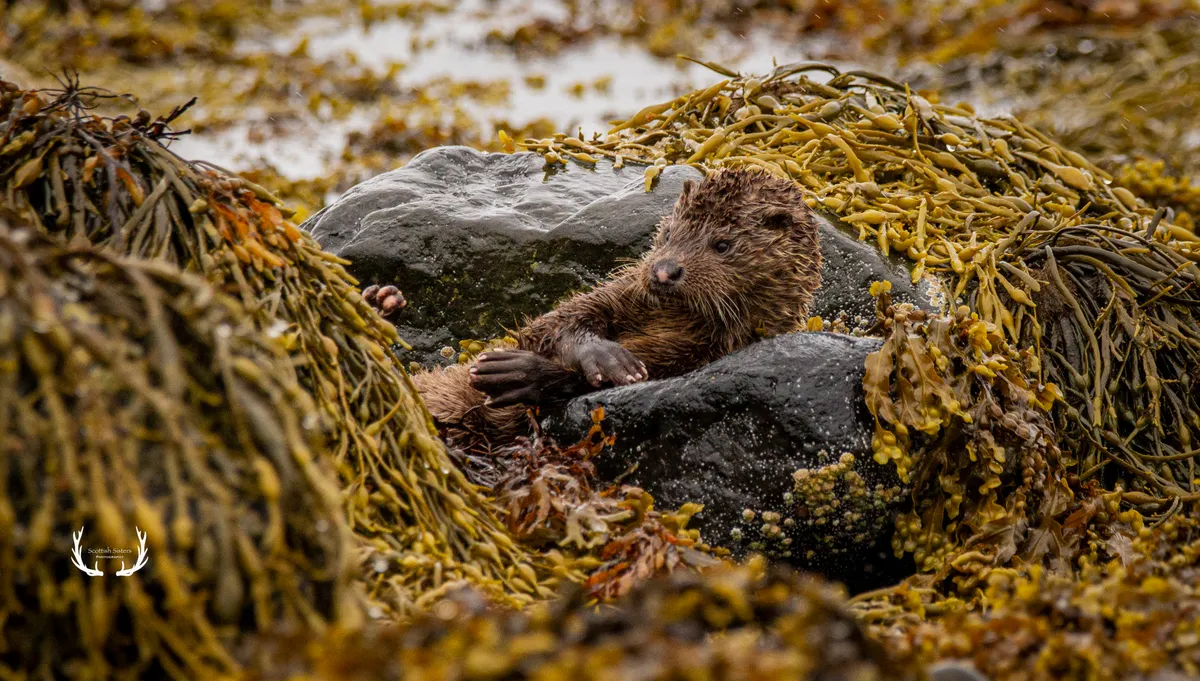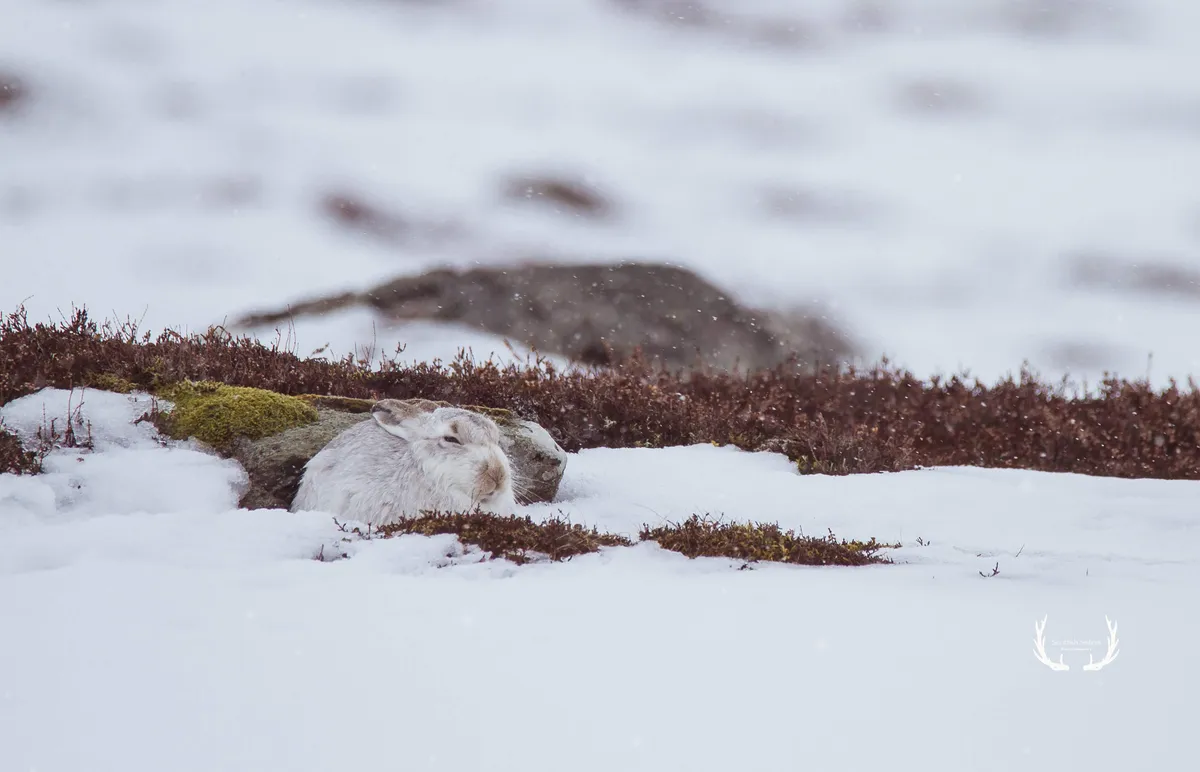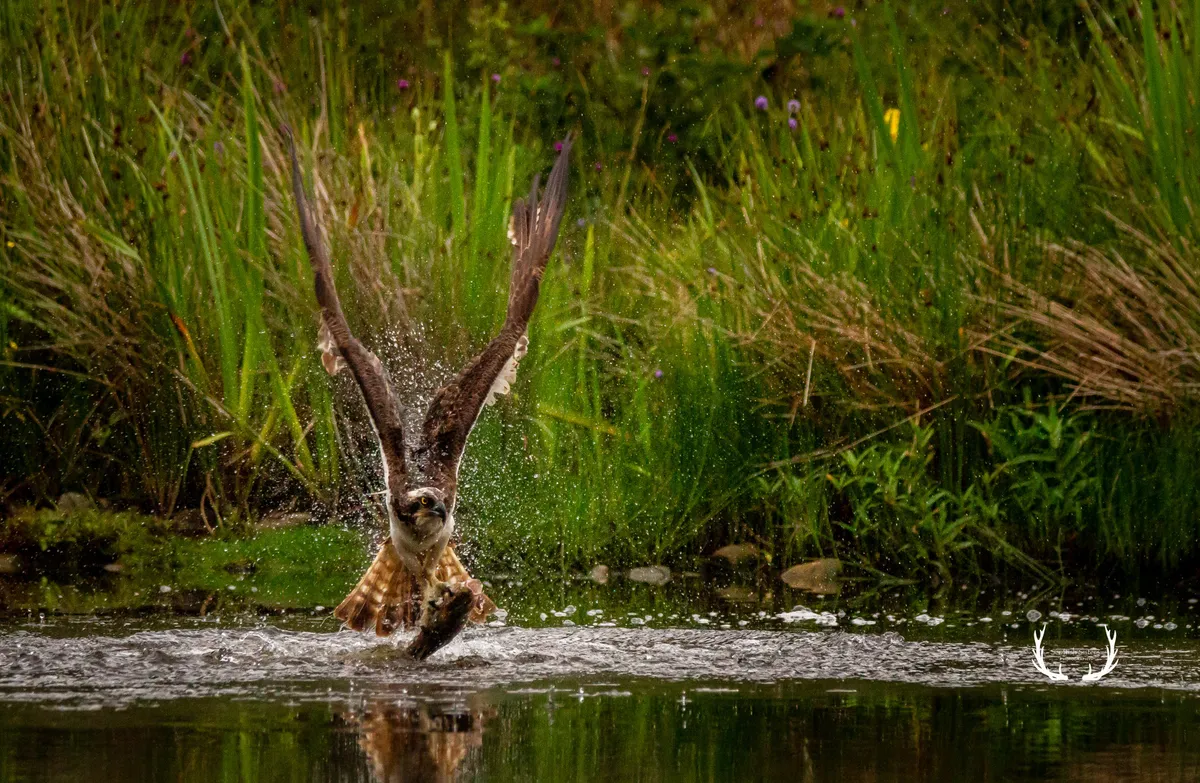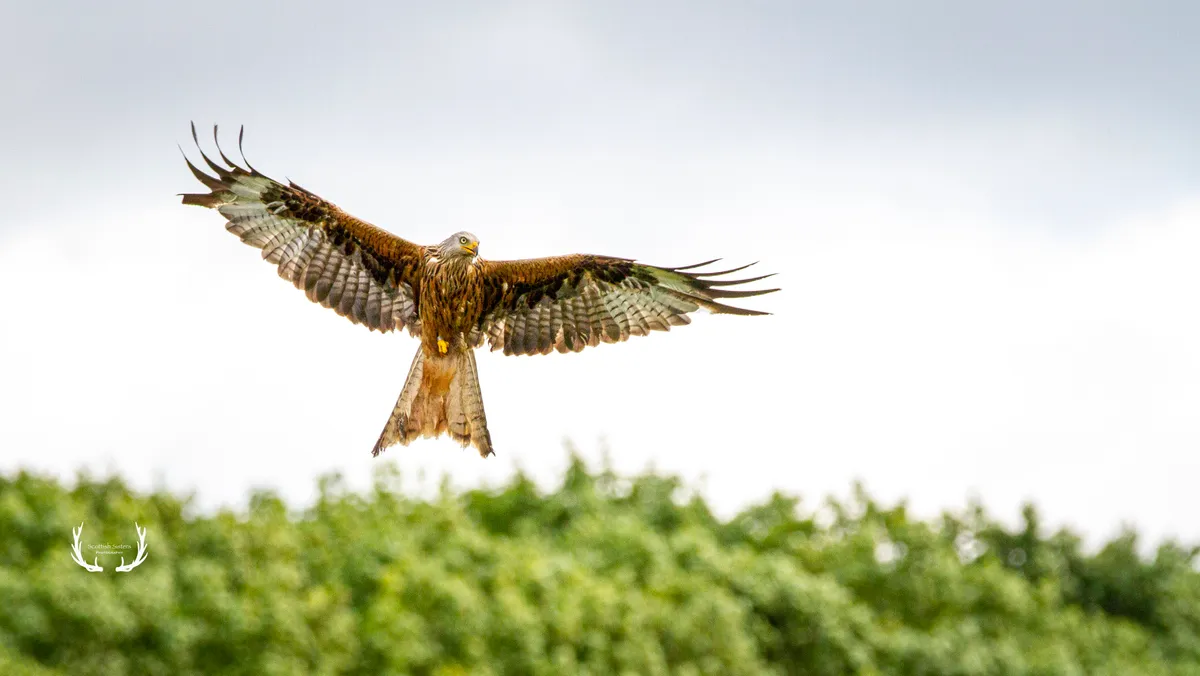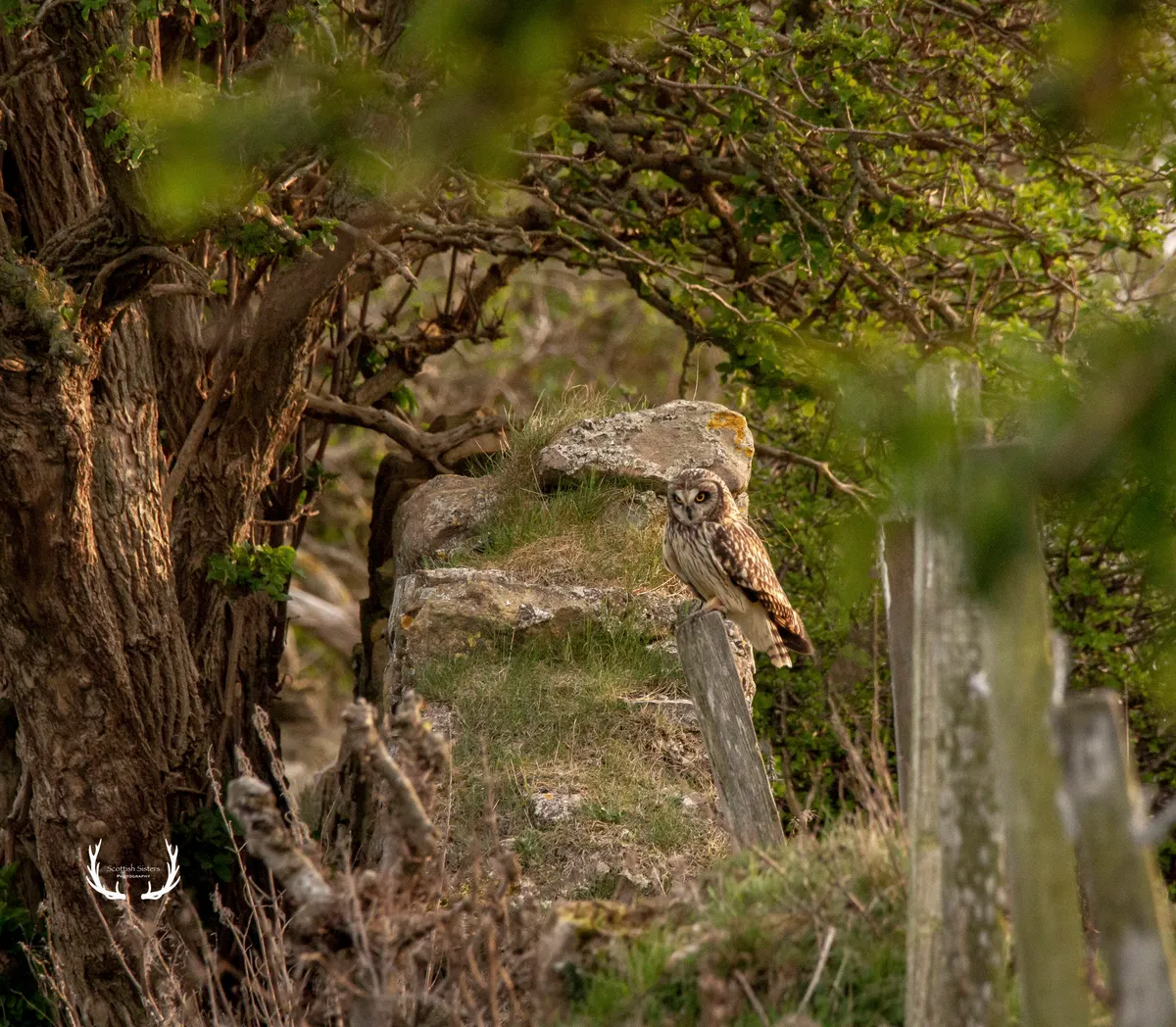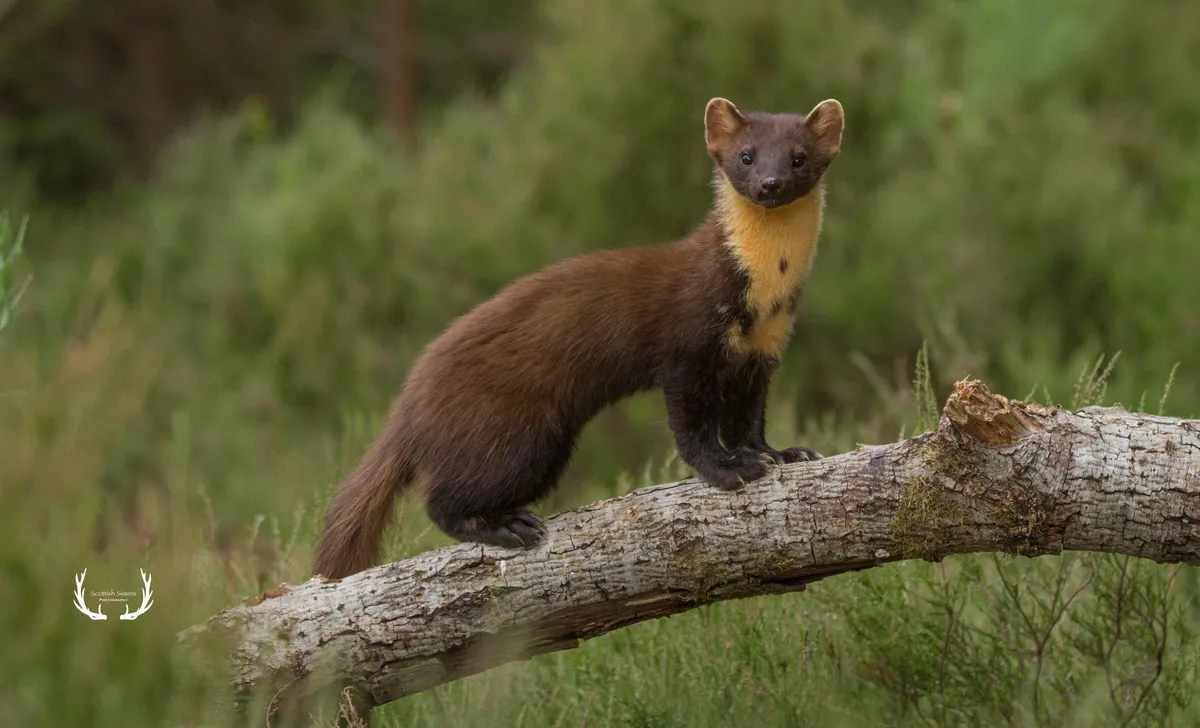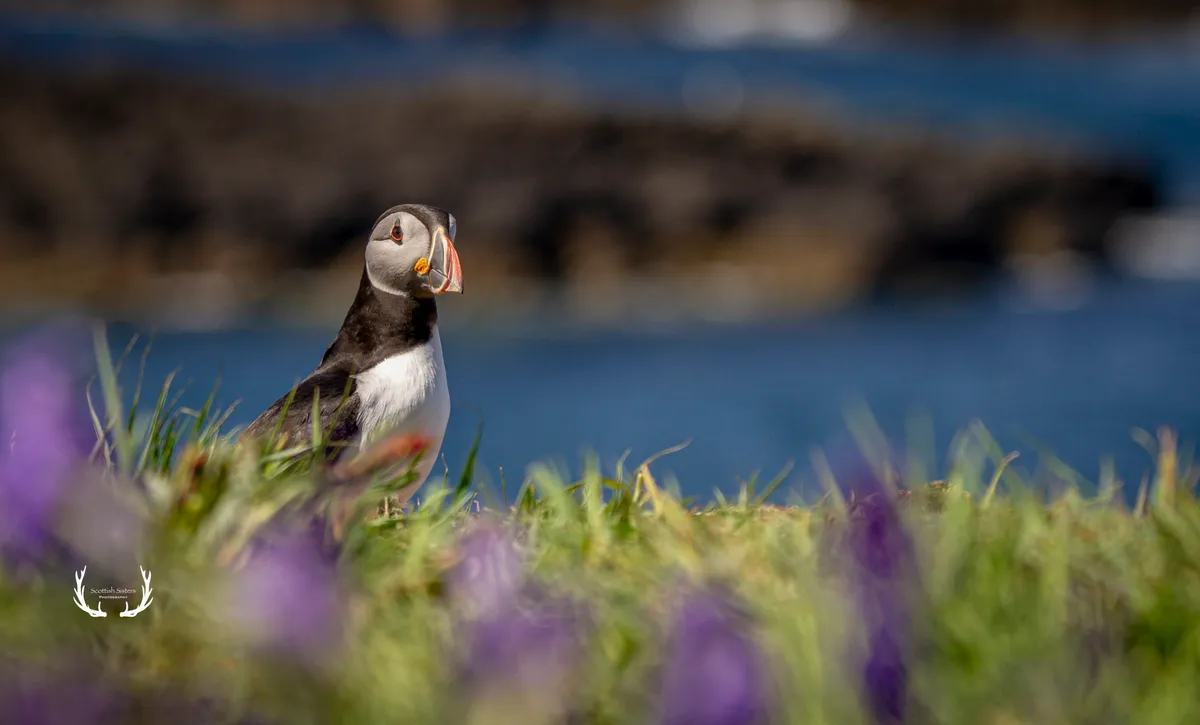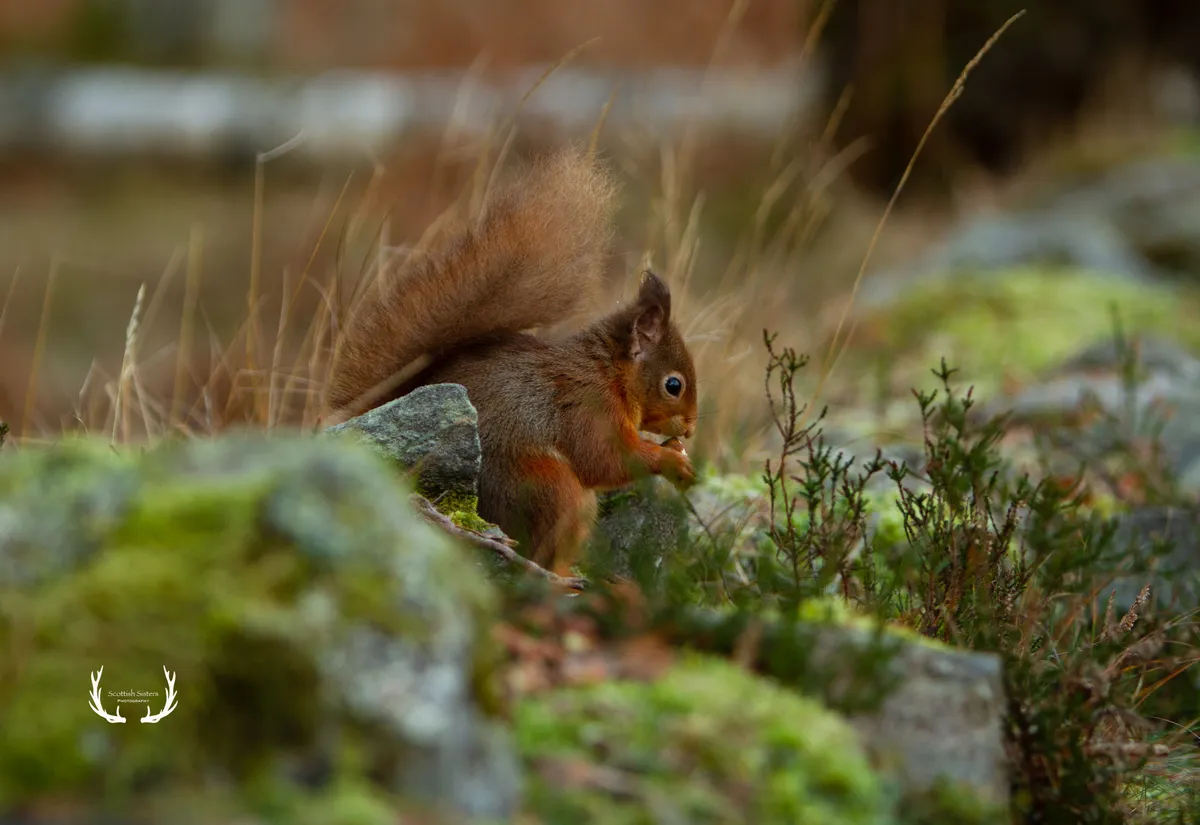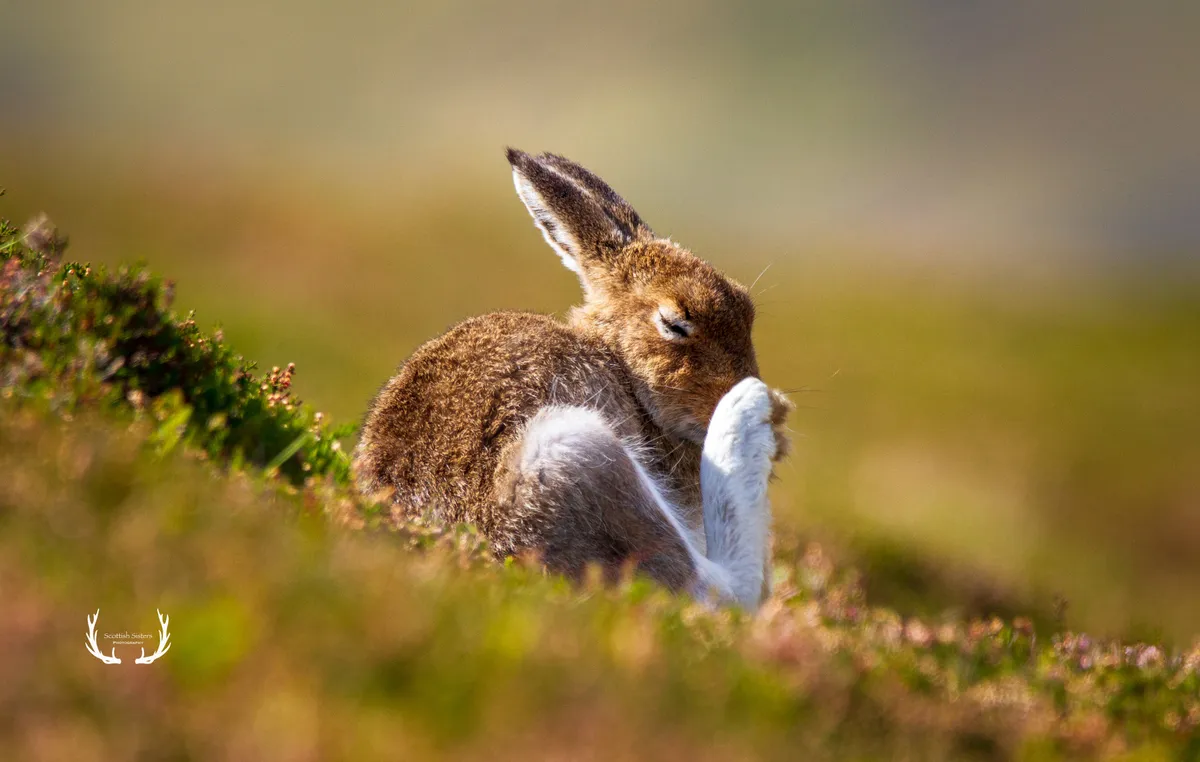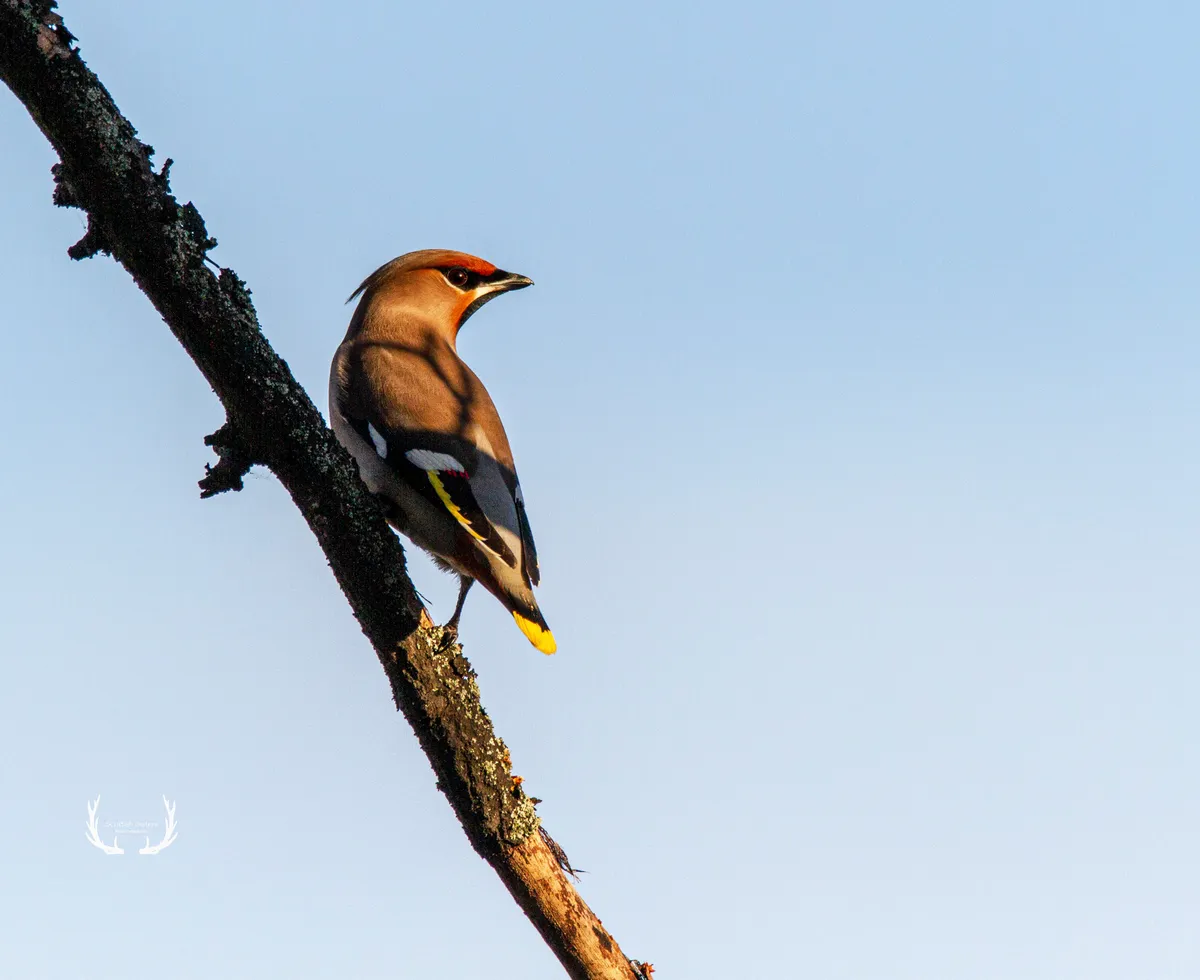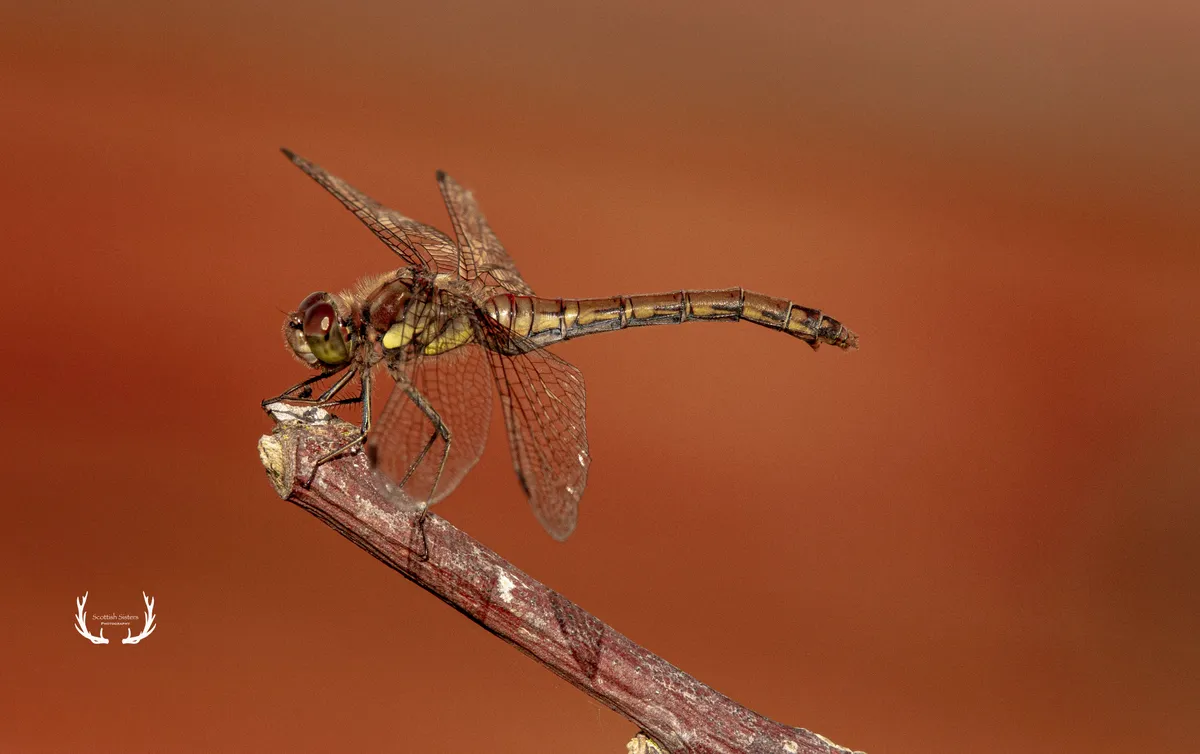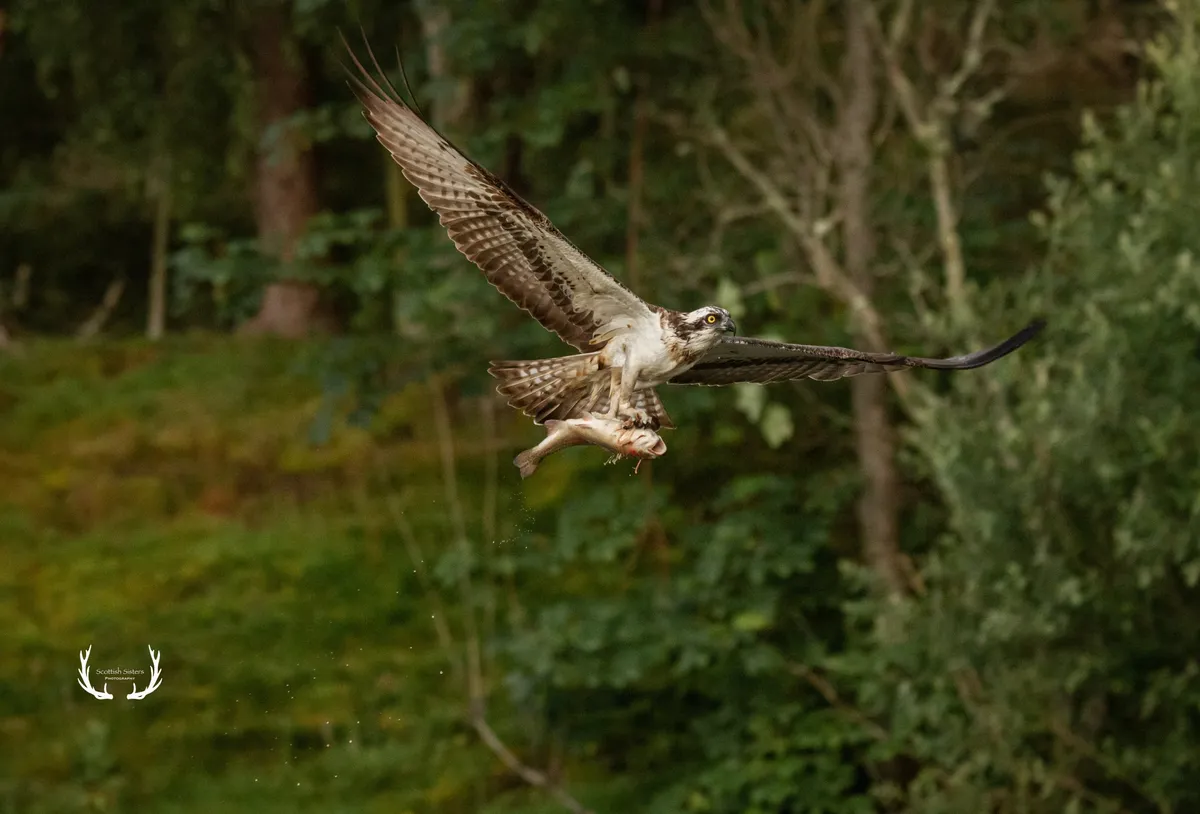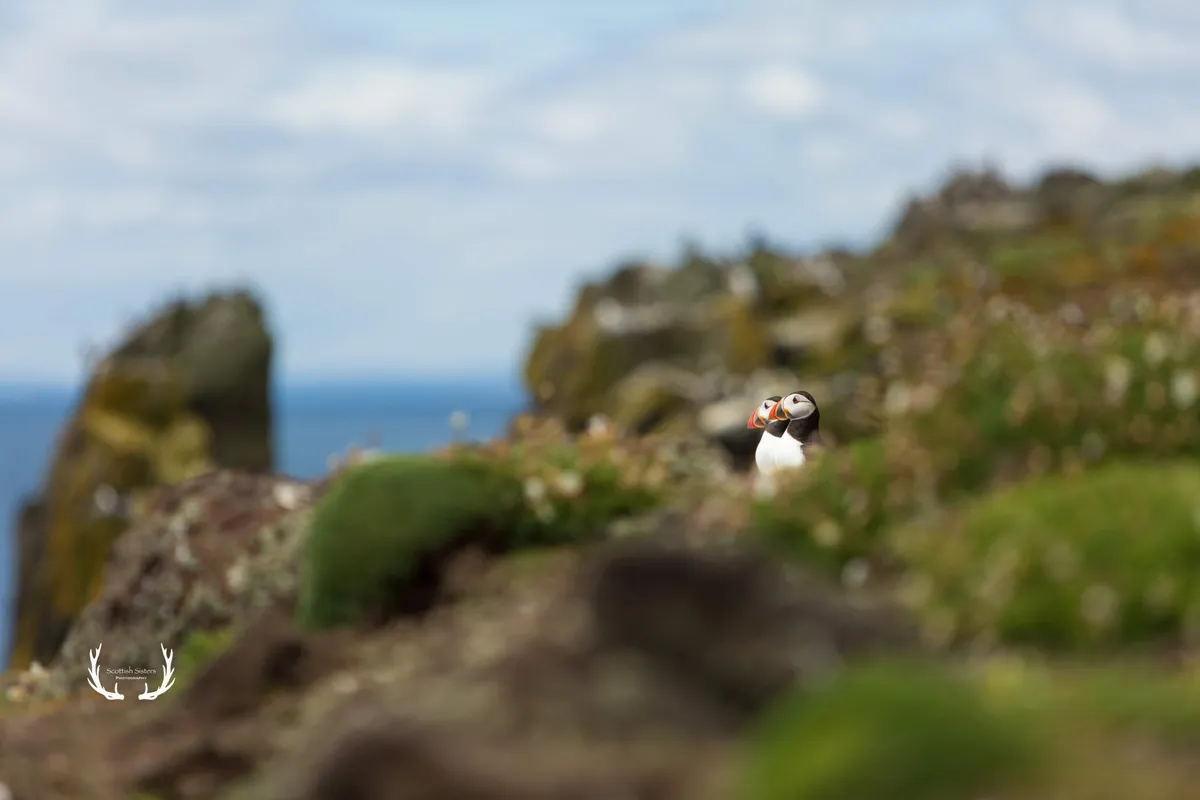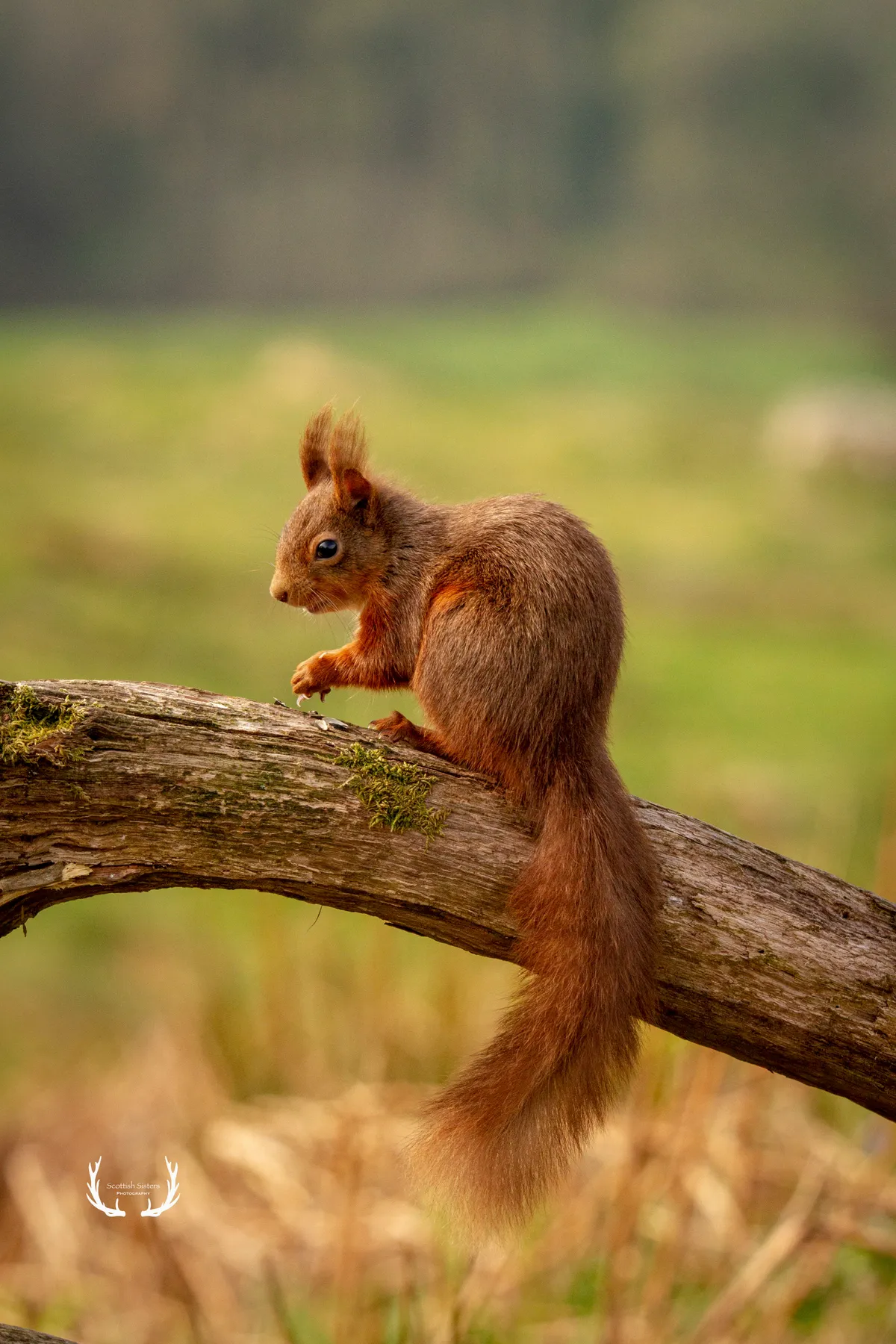About the photographers
Kate and Clare are the daughters of a wedding photographer. Following his passing in 2015 they found a hobby they could do together, whilst honouring their Dad and making their Mum proud.
Balancing photography with full time jobs they take any opportunity to get out and showcase Scottish wildlife at its best.
View more of their photographs on their website
More photo galleries from around the UK
Red squirrels are around half the size of grey’s but are far more particular about what they eat. They’ll test nuts for freshness and discard whatever doesn’t meet their high standards. Seeds, flowers, and fungi are also key parts of their diet. Clearly this one found a good meal. © Scottish Sisters Photography Mountain hares are our only native hare and can be found on the heather moorlands across Scotland and the Peak District. Using their back legs, they can reach speeds of up to 60kmph. This is quite handy when trying to outrun a golden eagle, their main predator. © Scottish Sisters Photography If you’ve ever been to Glen Etive, you’ll know the red deer are unnaturally tame. Trying to get a picture of one without the road or a telephone wire in the way is tricky. Thankfully this magnificent animal posed in front of some trees for a portrait shot. © Scottish Sisters Photography There are only two small herd of fallow deer on Mull and this was in Lochbuie. We’d never seen them before and they were resident near the cottage we stayed in. They’re not native to the UK but have been here since the 11th century. © Scottish Sisters Photography White tailed eagles or sea eagles are the UK’s largest bird, with a wingspan of up to 2.4m. Their powerful eyesight can spot a fish up to 3.2 kilometres away and as they descend for their prey it’s like watching a plane put down its wheels. © Scottish Sisters Photography This is a female otter on Mull who was taking the time for a freshen up in the seaweed on shore. With 300 miles of coastline, it may seem like spotting otters would be easy but they’re very elusive and blend in well with their surroundings. © Scottish Sisters Photography This was just after the beast from the east in February 2018 and shows the conditions which are harsh to us, but where the mountain hares thrive. They blend in perfectly with the snow which keeps them disguised from predators. Not that many would’ve been out that day! © Scottish Sisters Photography Ospreys complete a dangerous migration from Africa, southern Spain or Portugal each year to their breeding grounds in Scotland. They tend to mate for life and whoever is first back is in charge of housekeeping and making the nest ready for their next clutch of chicks. © Scottish Sisters Photography
Red kites are our fourth largest bird of prey and were widespread across the UK before eventually being reduced to a small population in Wales. A number of successful reintroduction programmes have taken place, including in central Scotland. This was taken at Argaty red kites where Clare is a volunteer. © Scottish Sisters Photography This short-eared owl was photographed just outside Edinburgh in some fields beside a new build estate. Not quite the heather moorlands they normally frequent! Their bright orange eyes indicate they are not nocturnal but can be seen during the daylight, quartering across the fields looking for prey. © Scottish Sisters Photography We waited a long time for this shot! Pine marten are secretive animals who are mostly nocturnal but during the summer months can be seen during the day. About the size of a cat, they have a varied diet including berries and small mammals. © Scottish Sisters Photography
Learn more about the species featured:
When you visit Lunga, which is part of the Treshnish Isles, in May the island is a carpet of stunning native bluebells. The birds there actively seek out human company as we protect them from the bigger predators. It’s an incredibly special place to get up close to the seabirds. © Scottish Sisters Photography Taken in Rothiemurchus surrounded by the beautiful caledonian pine forest, there’s no better place to watch these charismatic animals scamper about the woodland floor. Sometimes they’ll come so close it’s surprising they don’t climb into your bag! © Scottish Sisters Photography Looking for mountain hares in summer means a very, very steep climb. Every so often you take a break to “look for hares” but you’re actually trying to catch your breath! This was in early August and they were beginning to change in to their winter coat already. © Scottish Sisters Photography Bohemian waxwings are about the size of a starling and migrate over each winter from Scandinavia and Russia. They love berries from rowan trees and it’s quite common to see flocks of them in city centres, usually with a group of photographers in tow. © Scottish Sisters Photography Although common darter dragonflies are abundant in the UK between May and November, they are less common in Scotland. Dragonflies have been around for 300 million years but looked quite different to what we see today and had wingspans of up to 30 inches when dinosaurs roamed the earth. © Scottish Sisters Photography Ospreys are well equipped for fishing and can rotate one of their front toes backwards to ensure a firm grip on the fish they caught. They’ll shake the water off their oily feathers and head back to their nest to deliver a (normally) headless fish to their young. © Scottish Sisters Photography We took Kate’s puffin-fanatic mother-in-law out to the Isle of May so she could get a close up view. It’s a beautiful little island with a huge variety of seabirds and cracking views. Shooting a low aperture meant the puffins were the main focus of this picture. © Scottish Sisters Photography Red squirrels are our only native squirrel with the majority of the population found in Scotland. Taken in Argyll this cheeky wee one nearly joined us in the hide twice before realising there was an obstacle between them and the nuts. © Scottish Sisters Photography 